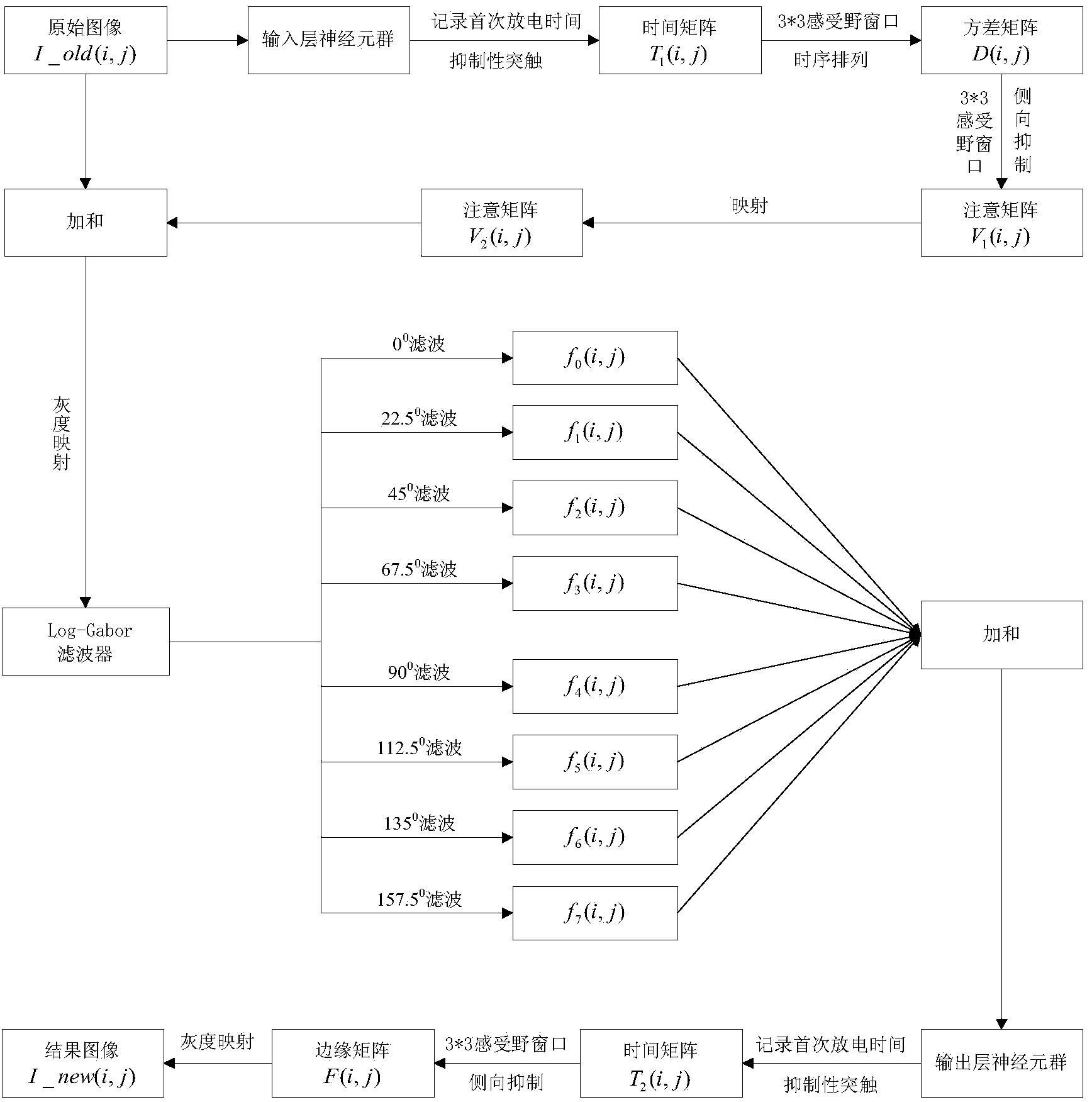Method for detecting weak edges of images on basis of discharge information of multilayer neuron groups
A detection method and neuron technology, applied in the field of image processing, can solve problems such as over-segmentation, insufficient weak edge performance, noise sensitivity, etc., and achieve the effect of obvious edge features
- Summary
- Abstract
- Description
- Claims
- Application Information
AI Technical Summary
Problems solved by technology
Method used
Image
Examples
Embodiment Construction
[0020] Such as figure 1 As shown, I_old(i,j) represents the original input image; T 1 (i, j) represents the time matrix obtained after passing through the input layer neuron group; D(i, j) represents the variance matrix after variance processing; V 1 (i, j) represents the attention matrix of matrix D(i, j) after neuron lateral inhibition; V 2 (i, j) represents the matrix V 1 (i,j) Attention matrix after mapping; f k (i,j)(k=0,1,...,7) is the Log-Gabor filter with angle θ i (θ i =22.5 0 *i,i=0,1,...,7) the result after filtering; T 2 (i, j) represents the time matrix obtained after passing through the output layer neuron group; F(i, j) represents the matrix T 2 (i,j) The edge matrix obtained after neuron lateral inhibition; I_new(i,j) represents the final image weak edge detection result.
[0021] The present invention considers: (1) the traditional edge detection method does not perform enough for weak details, and sometimes produces the problem of over-segmentation; (...
PUM
 Login to View More
Login to View More Abstract
Description
Claims
Application Information
 Login to View More
Login to View More - R&D
- Intellectual Property
- Life Sciences
- Materials
- Tech Scout
- Unparalleled Data Quality
- Higher Quality Content
- 60% Fewer Hallucinations
Browse by: Latest US Patents, China's latest patents, Technical Efficacy Thesaurus, Application Domain, Technology Topic, Popular Technical Reports.
© 2025 PatSnap. All rights reserved.Legal|Privacy policy|Modern Slavery Act Transparency Statement|Sitemap|About US| Contact US: help@patsnap.com



